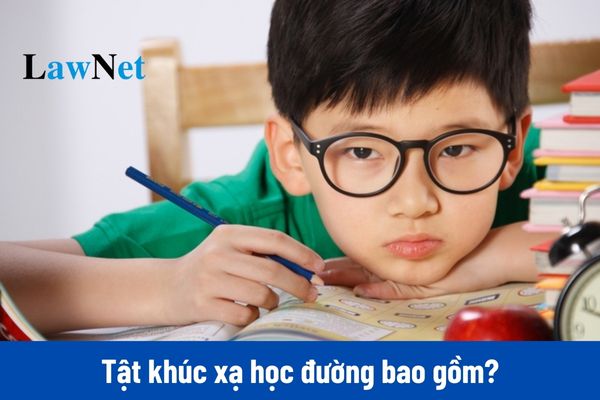What do school refractive errors include? What are the regulations on school health care and management in Vietnam?
In Vietnam, what do school refractive errors include?
Currently, refractive errors consist of four main types: myopia, hyperopia, astigmatism, and presbyopia. However, school refractive errors mainly focus on three major conditions: myopia, hyperopia, and astigmatism.
In recent years, the incidence of refractive errors has become increasingly common in Vietnam. People of all ages, from young to old, can suffer from refractive errors.
Refractive errors always cause inconveniences and disruptions in the daily life and studies of children. They are most commonly found among students, office workers, people who frequently use computers, the elderly, etc. According to information provided by the Ministry of Health in 2020, the incidence of refractive errors among adolescents is increasing significantly with:
- Approximately 15% - 20% of adolescents in rural areas
- Approximately 30% - 40% of adolescents in cities
- If reviewing the number of children aged 6 – 15 nationwide, the incidence of school refractive errors is about 20% equivalent to nearly 3 million children.
Note: Information on school refractive errors is for reference only!

What do school refractive errors include? What are the regulations on school health care and management in Vietnam? (Image from the Internet)
What are the regulations on school health care and management in Vietnam?
Under Article 9 of Joint Circular 13/2016/TTLT-BYT-BGDDT, regulations on school health care and management in Vietnam are as follows:
1. Carry out health examination at the beginning of every academic year to assess student’s physical and nutritional status by measuring the height and weight of students of under 36 months olds; and measuring the height and weight, blood pressure, heart rate and visual acuity of students of older 36 months old .
2. Monthly and quarterly measure the height and weight and record physical developmental milestone charts of under-24- month students and above-24-month students, respectively; measure BMI at least twice an academic year to provide advices on nutrition and physical exercises for high school students.
3. Regularly examine student’s health, visual acuity, curvature of spine, oral diseases, metal health and other diseases to cure and apply a proper learning environment and physical exercises.
4. Cooperate with qualified medical facilities to carry out specialty examination and treatment.
5. Administer first aid and emergency treatment under current regulations of the Minister of Health.
6. Provide students, their parents or guardians and teachers with advice on common diseases, student physical and mental development and healthcare; in case of disabled students, assist them in inclusive education.
7. Provide instructions on healthy meal and diversified foods according to student’s age ( for boarding schools and semi-boarding schools)
8. Cooperate with local medical facility to administer vaccines to students.
9. Notify students’ parrents or guardians of their child’s health at least once an academic year or where necessary. Medical staff shall assess students’ health status by the graduation as the basis for health recording in the higher level.
10. Record the student health in health examination record, health record and integrated health record.
11. Regularly inspect and supervise the study environment, school hygiene, food safety, drinking water and hand wash. Implement measures for preventing and controlling diseases under the Circular No.46/2010/TT-BYT and other instructions of medical authorities.
12. Conduct medical programs and hygiene campaign, participate in physical exercises, healthy meal, and create smoke-free, alcohol-free and addictive-free schools.
What are the regulations on organizing health communication and education for students in Vietnam?
Under Article 10 of Joint Circular 13/2016/TTLT-BYT-BGDDT, regulations on organizing health communication and education for students in Vietnam are as follows:
- Compile and use documents on health education according to student age and the local reality.
- Educate students, their parents or guardians about infectious disease and food poisoning prevention measures ; nutrition, physical exercises, cigarette and alcohol effect, compulsory schooling diseases, oral health, eye diseases and other injuries; propagate and participate in health education programs launched by the Ministry of Health and Ministry of Health and Training.
- Include health education in lectures.
- Get students participate in personal hygiene, school and environment cleaning, infectious healthy meal, physical exercises, prevention of tobacco and alcohol adverse effects, compulsory schooling diseases, eye diseases and injuries via proper models and methods

